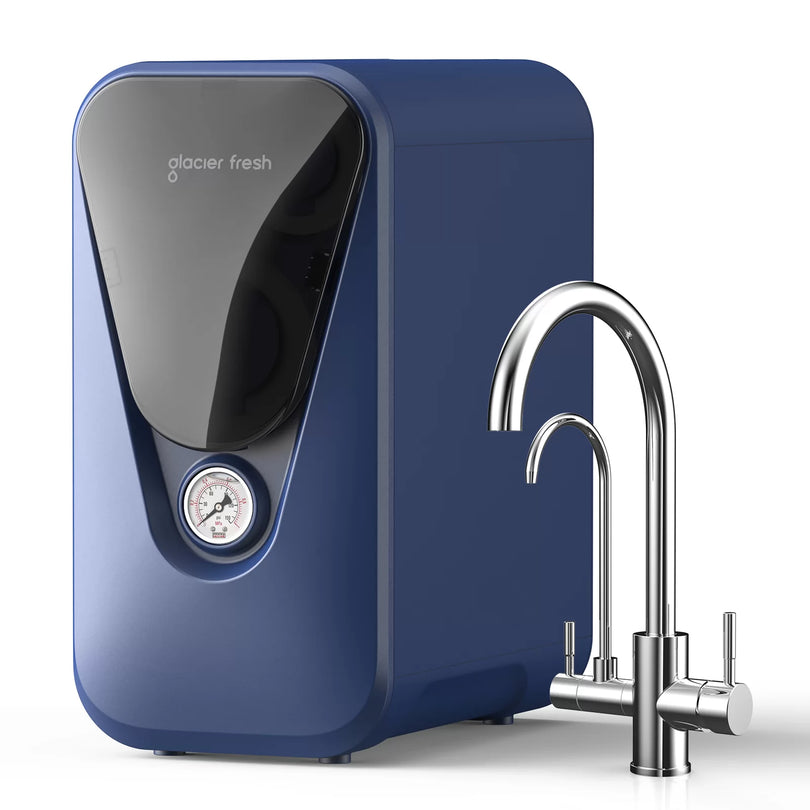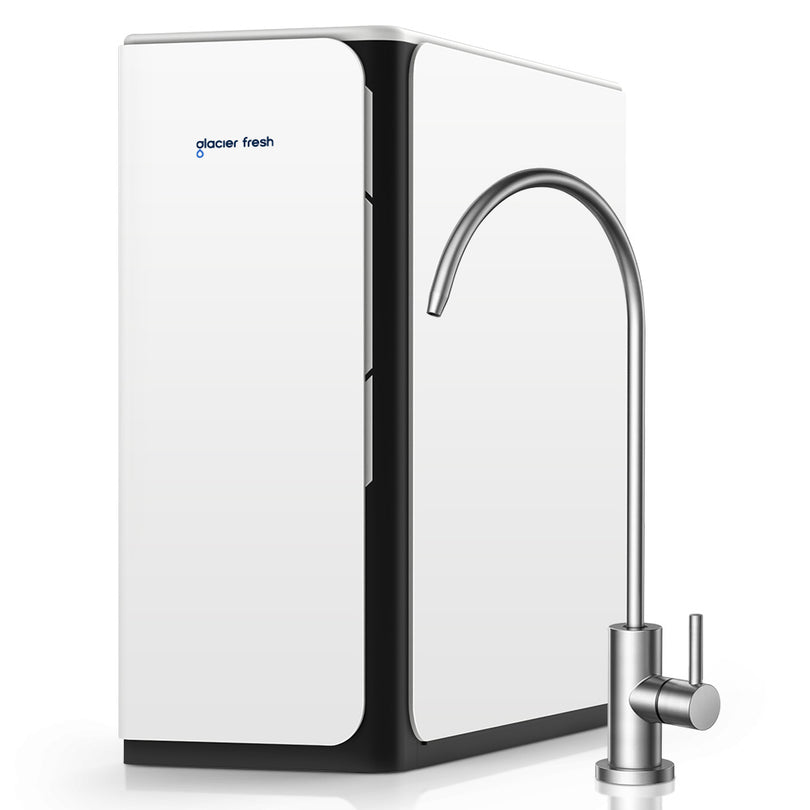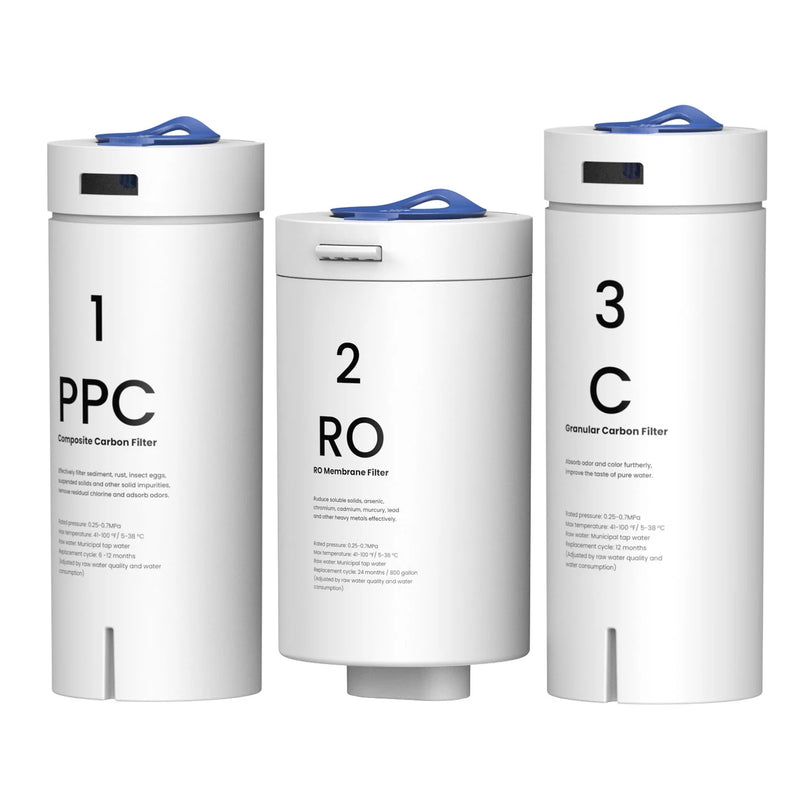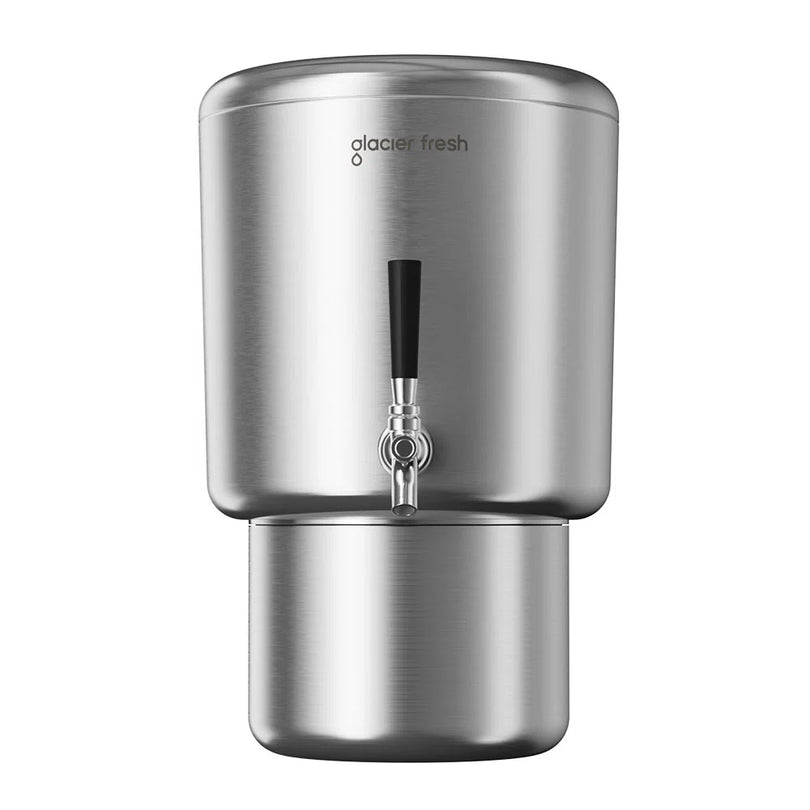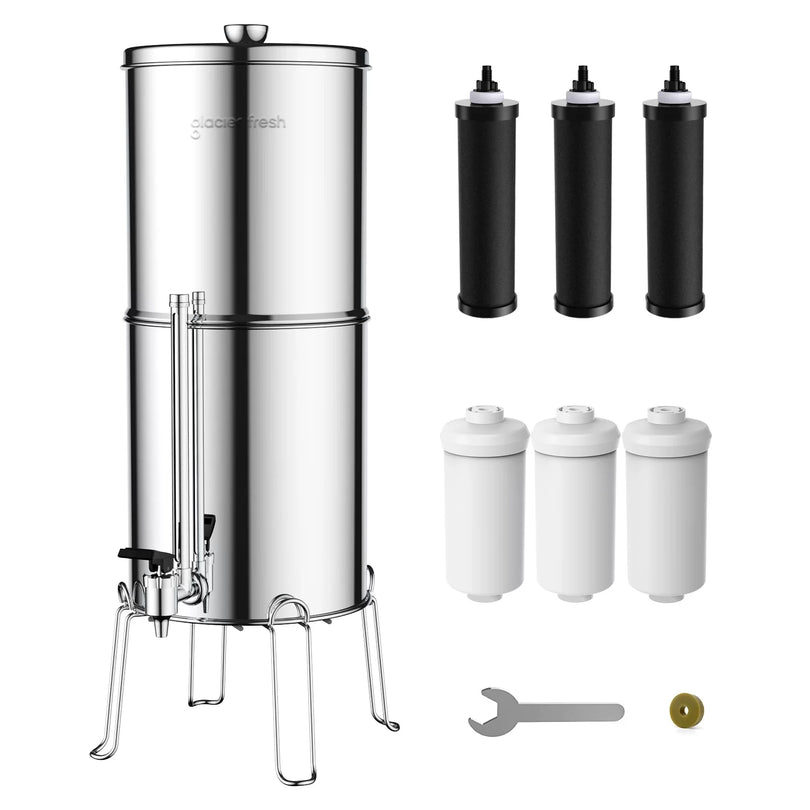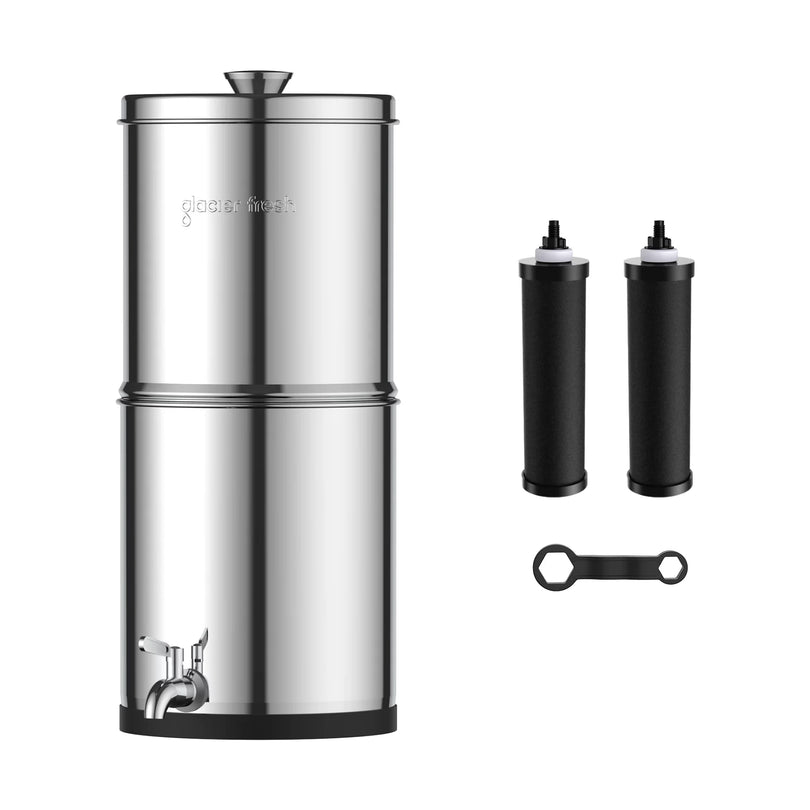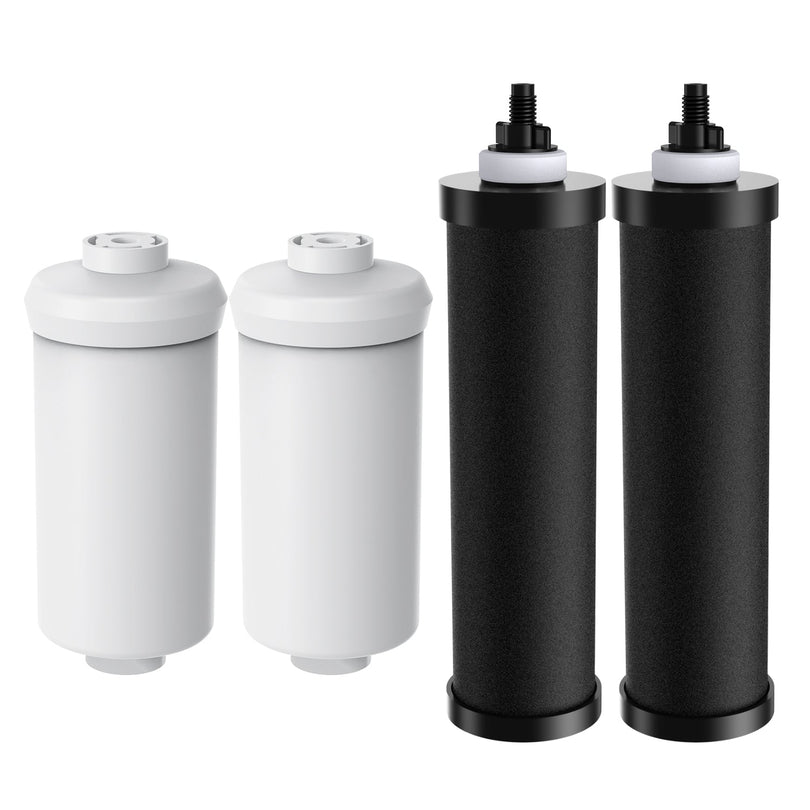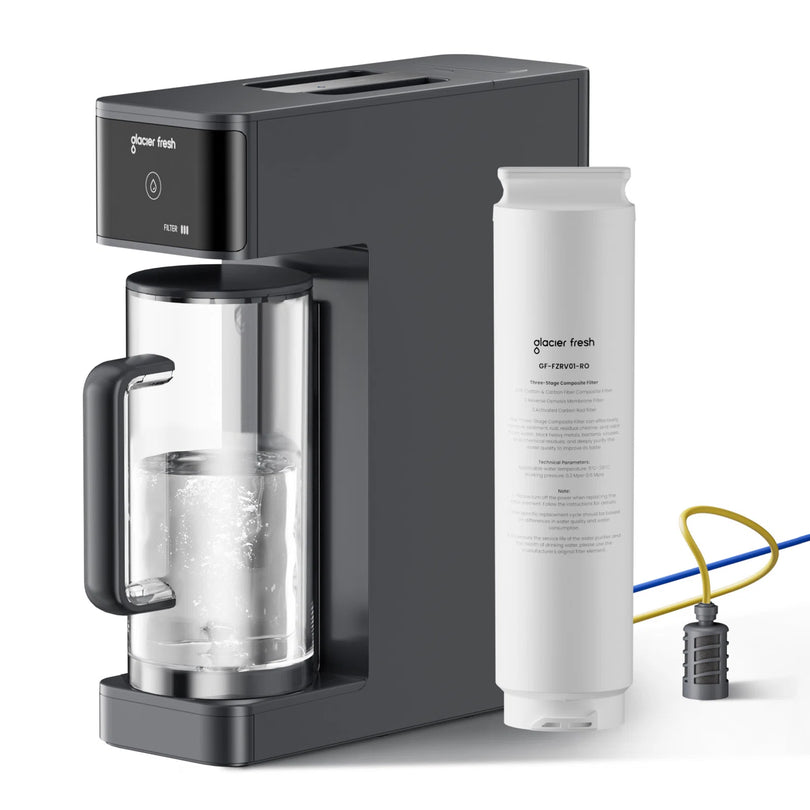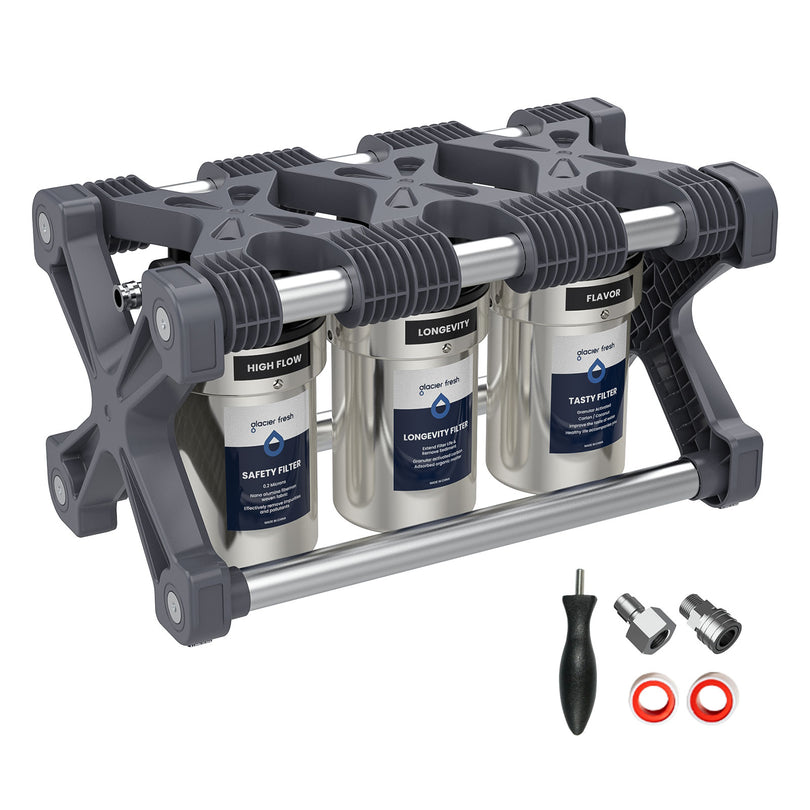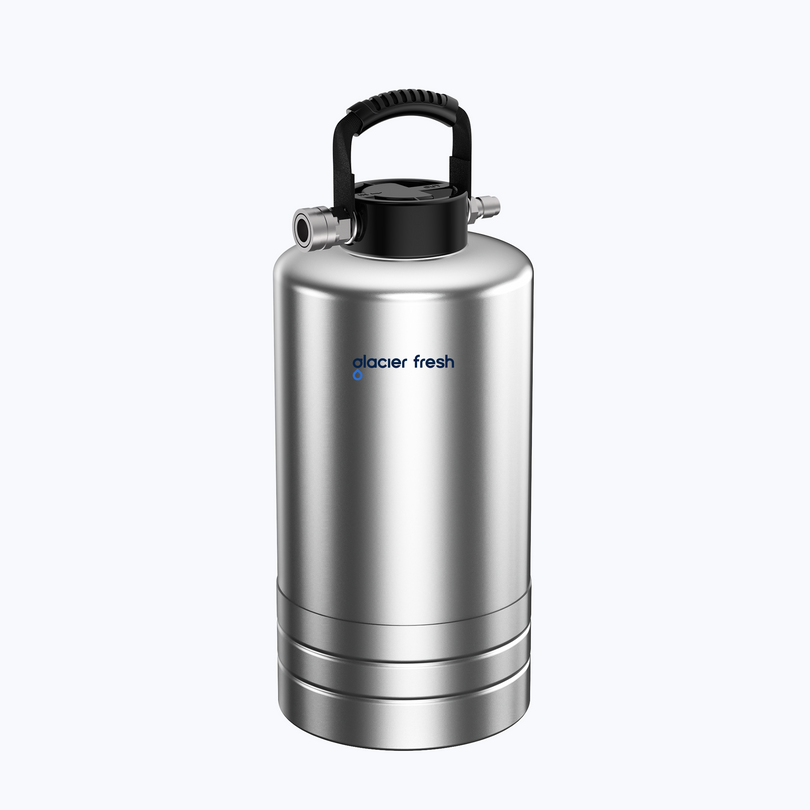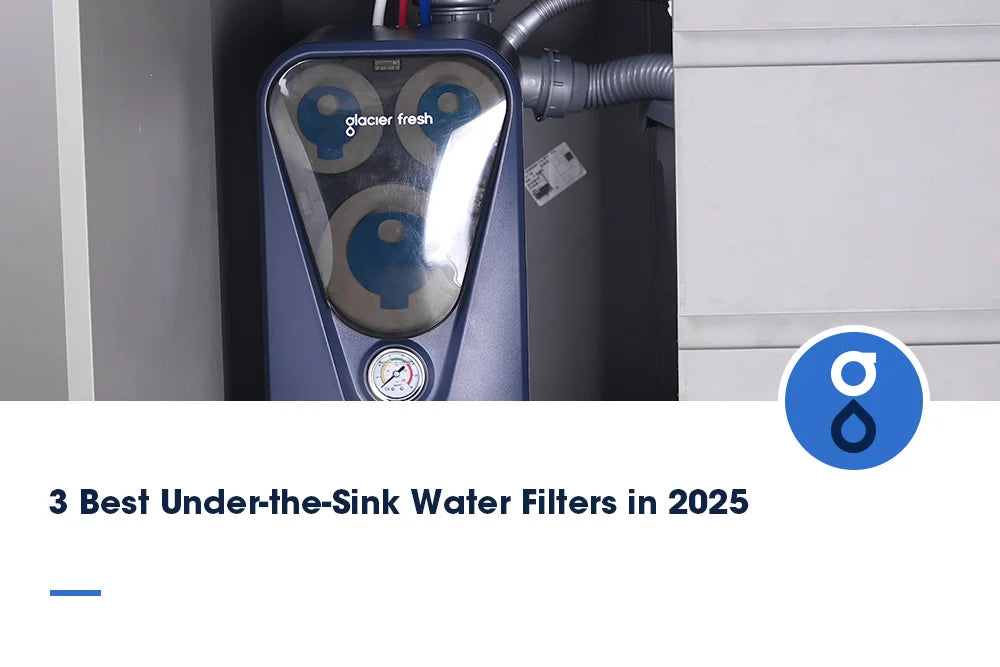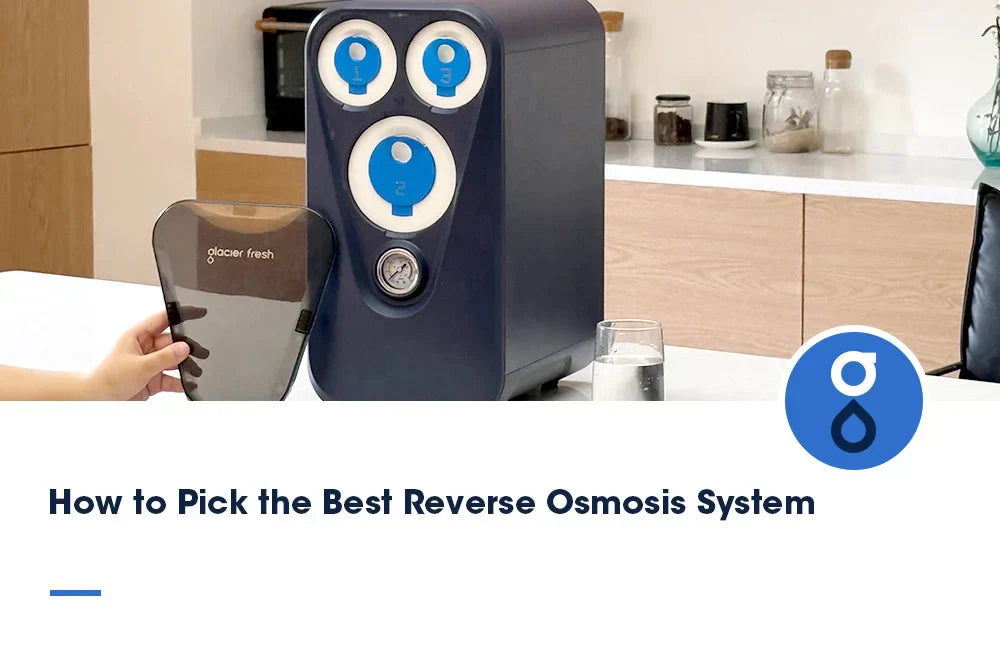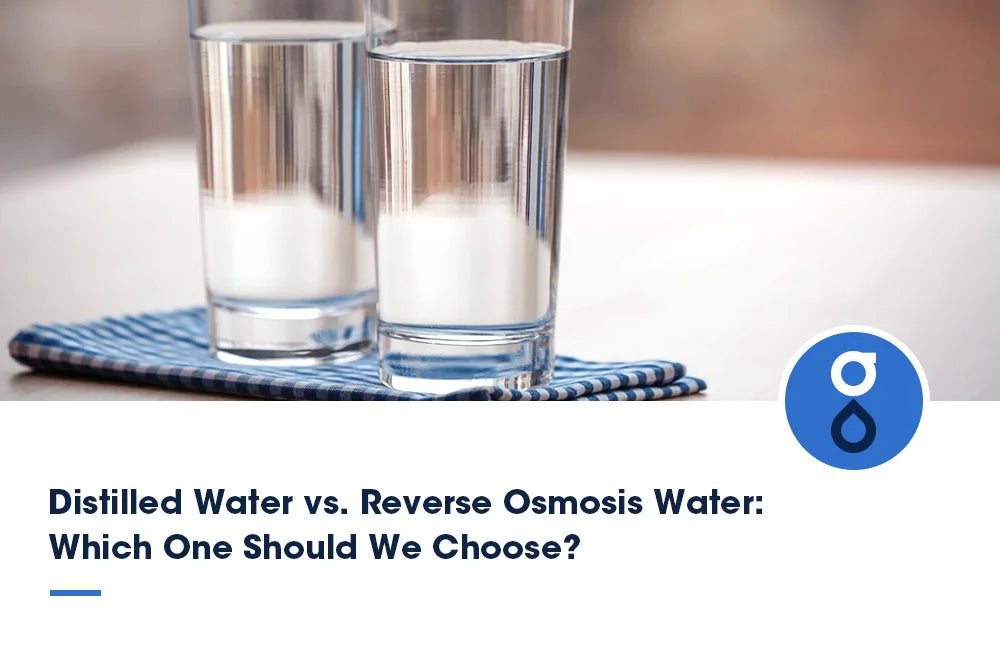Table of Contents:
Best Under-the-Sink Water Filter
How to Choose the Right Under-Sink Filter for My Home
How to Maintain Under-the-Sink Water Filters
Conclusion
Under-sink water filter systems are small-scale filtration systems installed directly under your kitchen sink, providing clean, purified water through a dedicated faucet or by using your existing tap.
The best under-sink water filters are multi-stage, highly effective, and space-efficient. They eliminate the presence of harmful pollutants like lead, chlorine, PFAS, heavy metals, bacteria, and so on, and enhance the taste and smell.
In the year 2025, new technology in reverse osmosis (RO) and filtration, and powerful design make these systems more viable and cost-effective than ever before. This is a list of three of the best water filters we have listed together this year.
Best Under-the-Sink Water Filter
1. Glacierfresh U03 800GPD Reverse Osmosis System
The Glacierfresh U03 under-sink reverse osmosis system is one of the most elaborate and easy-to-use filtration systems in 2025. It is created to meet the needs of the family that desires the highest quality of water without an intrusion into their space or efficiency.
This countertop reverse osmosis water filter system has a capacity of 800 gallons per day, which is well capable of supplying the requirements of a 2 to 3-person household. Its 5-stage filtration mechanism eliminates a high percentage of impurities of up to 99.99% such as lead, nitrates, arsenic, fluoride, bacteria, and viruses. It is also capable of removing up to 60 percent of TDS (Total Dissolved Solids) and results in clear-tasting, crisp water.
The U03 is not-electric compared to its counterparts in the traditional RO departments and thus continues to operate even during blackouts, as well as it is also emission-free. It has a 3:1 pure to drain ratio, which greatly minimizes; hence, it is even environmentally friendly. It is easy to install, with most people taking less than 20 minutes without the use of a plumber, and the tankless design occupies little space and fits well under most sinks.
The filter PPC lasts 6 months, and the RO membrane lasts up to 2 years; maintenance is easy. The Glacierfresh U03 is difficult to beat whenever anyone is looking at a quiet, efficient, and dependable RO.
2. Aquasana 3-Stage Max Flow Under Sink Water Filter
The Aquasana 3-Stage Max Flow is another top-performing system that would satisfy those homeowners who are more concerned with the quality of water and convenience. It is a triple-stage filtration system that successfully removes toxins like lead, chlorine, mercury, asbestos, and pharmaceuticals and preserves essential minerals like calcium and magnesium.
The most distinguishable feature of this model is that it has a Claryum® filtration technology; a fusion of activated carbon, catalytic carbon, ion-exchange, and sub-micron filtration within a slim unit. It has a high flow rate of 0.72 gallons per minute, so it has minimal effects on water pressure.
The Aquasana system also has an all-metal faucet with different finishes that match your kitchen style, and it is not very difficult to install since most people can make this a DIY project. It can filter that can last 6 months or 800 gallons, hence it requires less maintenance. Although it does not reduce TDS to the extent of an RO system, like the Glacierfresh U03, it suits those who prefer cleaner, enhanced-tasting water without stripping it of natural minerals.
3. A.O. Smith AO-US-200 Advanced Under Sink Filter
The A.O. Smith AO-US-200 excels in a simple yet powerful water filtration system, where its performance is greatly outweighed by its compact and affordable size. Over 99% of lead, as well as chlorine, sediment, cysts, and certain pesticides and pharmaceuticals, are reduced using this model.
Its ultra-fine filtration and quick flow make it one of its strengths since now clean water will be available to you without delay. Filter life is impressive, lasting up to 6 months or 500 gallons, and can be replaced fast and without using any tools.
Although lacking the multi-stage depth of an RO system and innovative mineral-retention technology, it is a predictable alternative to those families in which tap water is generally safe but only, essentially, requires an added line of protection and a better taste.
How to Choose the Right Under-Sink Filter for My Home
Consider the following when choosing the best under-the-sink water filter:
Contaminant Removal: If your water supply contains a high level of TDS, heavy metals, or microbiological contaminants, a reverse osmosis system, such as the Glacierfresh U03, is ideal for this type of purification.
Flow Rate: You can get systems with high flow rates, preferably the ones in which water comes out faster, although ultra-pure RO systems will be slightly slower.
Mineral Retention: Certain filters retain valuable minerals, and there are others that eliminate them. In case you value taste so much, then you might want a system that maintains minerals.
Maintenance Costs: Make sure that the cost of the filter life and replacement is verified. Filters that can last long can end up saving a lot of money.
Ease of Installation: These systems are also easy to install on DIY projects, and with user-friendly instructions, you do not have to hire a plumber.
How to Maintain Under-the-Sink Water Filters
Regular care of your filter means that your filter will continue to work longer and efficiently. Depending on the water usage and local water quality, most systems need to have their filters replaced after some 6 to 12 months. In terms of RO systems such as the Glacierfresh U03, the PPC filter can be considered changed every 6 months, and the RO membrane may last a period of 2 years.
It is also worth checking regularly to see whether there are any leaks, clearing faucet aerators, and checking your water pressure. A lot of the newer systems, such as the U03, offer simple twist-off filter replacements, so maintenance is fast and without the mess. Neglecting the filter changes may result in lower performance, bad taste, and even bacterial accumulation; hence, it is necessary to conduct timely maintenance.
Conclusion
In 2025, the best under-the-sink water filters are advanced, easy-to-use, and time-saving models with elegant designs that can provide you with clean, safe, and delicious water directly from your tap.
The Glacierfresh U03 under-sink reverse osmosis system is highly recommended to remove as many contaminants as possible at an optimum rate. Aquasana 3- Stage Max Flow is a great option in case you want your flow and mineral preservation to go quicker. When a basic and cheaper update is required, the A.O. Smith AO-US-200 is an impressive performer.
Whichever system you use, however, the installation of a water filter under-sink is a small step in the direction of improved health, improved taste, and long-term savings when compared to bottled water.
Related reading:

